| Birding trip South Sweden 24 Sep - 8 Oct 2006 | |
| John van der Woude http://johnbirding.wolweb.nl | |
| See also species list
(including itinerary)
|
See also trip
report 2004
|
| This report gives additional
information to the one of autumn 2004. Both trips were mainly meant
for watching bird migration. The report of 2004 gives information
about where and how to watch the migration, both at Falsterbo (the
south tip of Sweden) and at Öland. The present report shows some more
photos of the birding sites at both destinations, and also of a few
inland sites. The trip was by car and with our comfortable tent. Some avian highlights were: 18 raptor species, Capercaillie, Buff-throated Sandpiper, six pipit species, Red-breasted Flycatcher, Nutcracker. Mostly we had fine weather, enjoyed the company of the other birders at the migration watchpoints, and loved the Swedish food specialties of the ICA stores. |
|
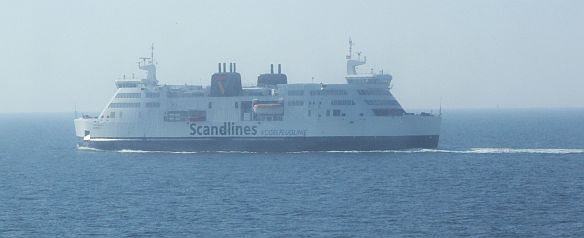 Puttgarden-Rödby ferry. Despite the bridge in mid Denmark, this is still the best option for getting from Holland/Germany to eastern Denmark by car. From the deck, a few birds on migration (like pipits) can be seen already. From Denmark to south Sweden, there is the new bridge. The whole ride from Amsterdam to Falsterbo takes about 9 to 10 hours. |
|
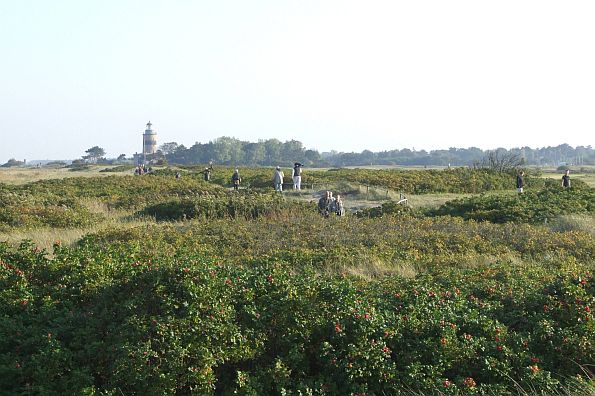 Falsterbo area. Birders walking the sandy trail between the car park near the lighthouse and the very south tip of this remarkable peninsula. Although many migrant passerines can be seen resting near the lighthouse and in the shrubs along the trail, nearly all birders walk straight to the south tip. This is indeed the best spot, both for passerines and for waders and seabirds. Still, birding on your own between these shrubs can be a delight after having been at the tip for several hours, in a flock of maybe a hundred other birders. |
|
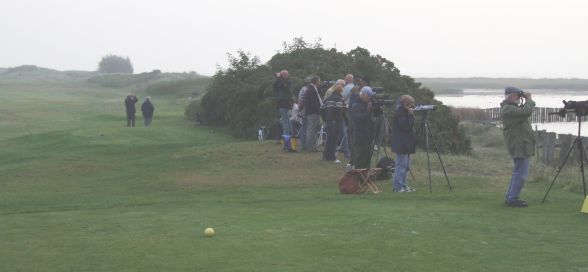 Falsterbo area. Apparently, there is little overhead migration at this moment, because all birders are watching the waders etc. on the mudflats south of the tip of the peninsula. The greens of the golf course on this south tip stretch up to the sea, forcing the birders to stand very close to the golfers. Still, I never saw any animosity from the side of the golfers, despite some stupid birders walking straight across all the greens towards the south tip, in stead of along the trail on the photo above. |
|
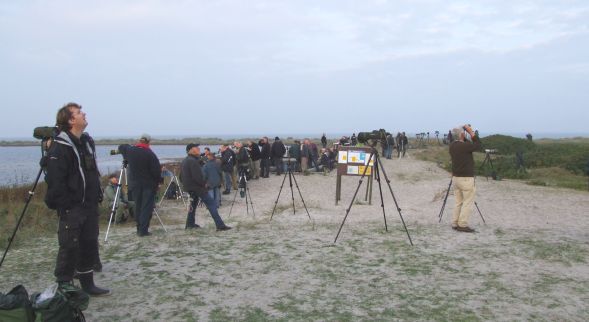 Falsterbo area. Birders watching overhead migration at the south tip of the peninsula. This spot also functions as a social meeting point for these birders, and this makes the official counters sometimes ask for a bit more silence so they can better hear the peeps of the passerines. |
|
 Falsterbo area. The west border of the Ljungen heath is generally the best spot for watching the raptor migration from about eleven o'clock in the morning until two or three in the afternoon. The campsite is immediately to the right. |
|
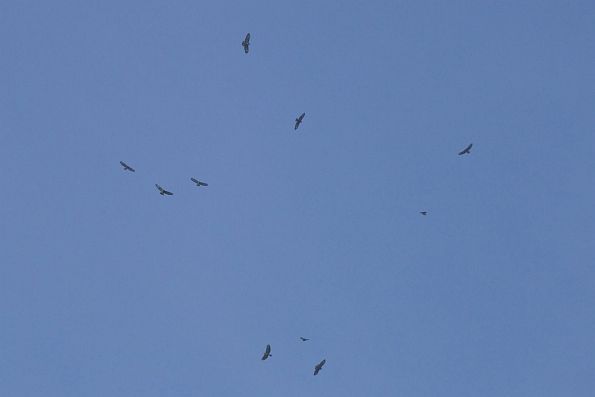 Falsterbo area, Ljungen heath. Part of a kettle of Buzzards plus a few Honeybuzzards (like the lefthand one of the lowest three). |
|
 Falsterbo area, Ljungen heath. A large kettle of raptors drifting westwards out of sight makes people get out of their comfortable camping chairs. |
|
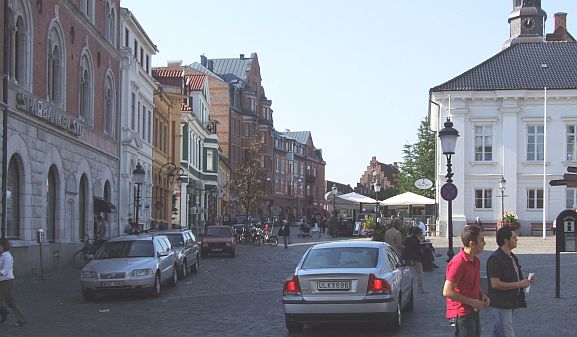 Ystad, at the south coast, one hour east of Falsterbo. The area N of Ystad is good for resident raptors. Ystad itself is a nice town, and famous from the Wallander books by Henning Mankell. |
|
 Golden Eagle N of Ystad, at the south end of Fyledalen. Three together! |
|
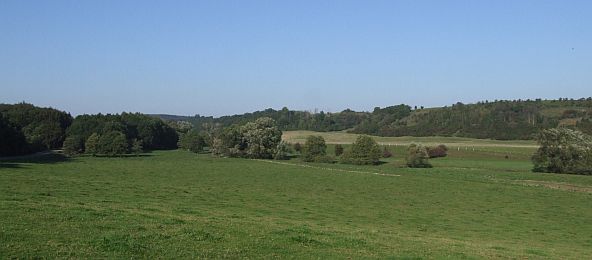 N of Ystad. Central part of the Fyledalen. More raptors (Red Kite). |
|
 Lake Åsnen area. View from the Getnö Gård campsite near Ryd. As to be expected in autumn, we saw practically no water birds. A very nice inland site halfway Falsterbo and Öland. |
|
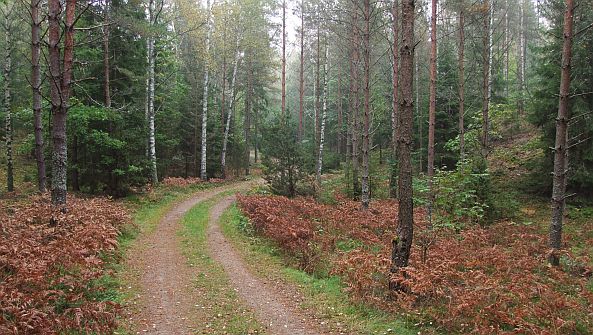 Lake Åsnen area. Good mixed forest (Black Woodpecker etc.) along the track leaving the NE corner of the campsite. |
|
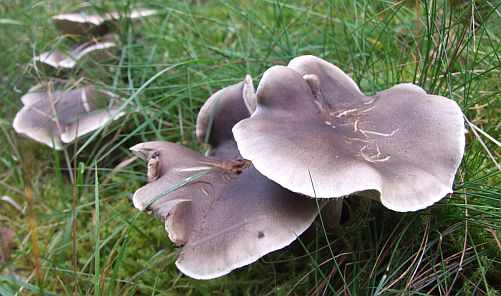 Lake Åsnen area. Many mushrooms in the forest shown above. |
|
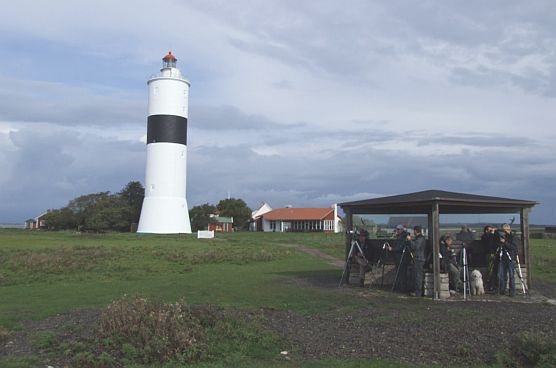 Ölands south tip. Migration watch at the wind shield between the lighthouse and the south shore of this elongated island parallel to the SE coast of Sweden. |
|
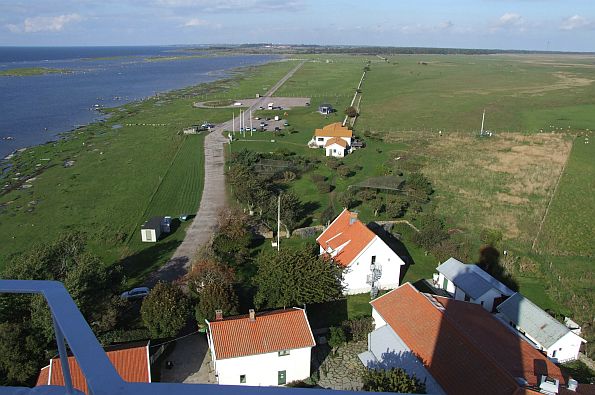 Ölands south tip. View from the lighthouse towards the North. The orchard in the middle of the photo is where most birds are caught for ringing. |
|
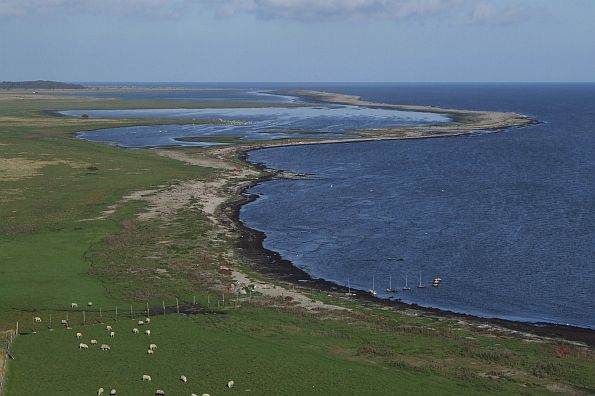 Ölands south tip. View from the lighthouse to the NE: the lagoons with many water birds. Often, White-tailed Eagle and Peregrine are present here. The pastures to the left are the so-called Schäferi ängerna, always nice to stroll around for the odd wader or pipit. |
|
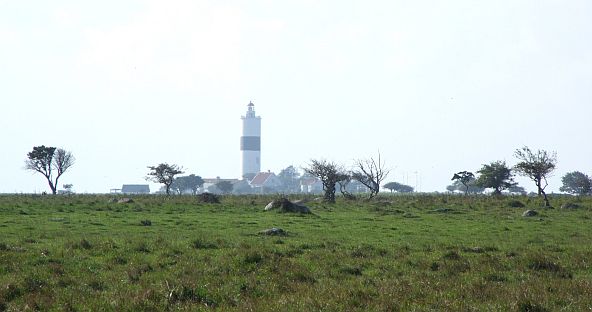 Ölands south tip. The splendid isolation of the lighthouse 'hamlet' attracts many passerines. |
|
 Ölands south tip. A relative rarity (Yellow-browed Warbler) has turned up in one of the gardens. |
|
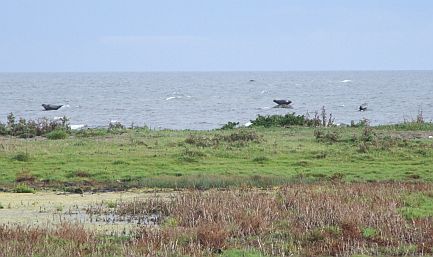 Ölands south tip. Seals resting on submerged rocks east of the lighthouse. |
|
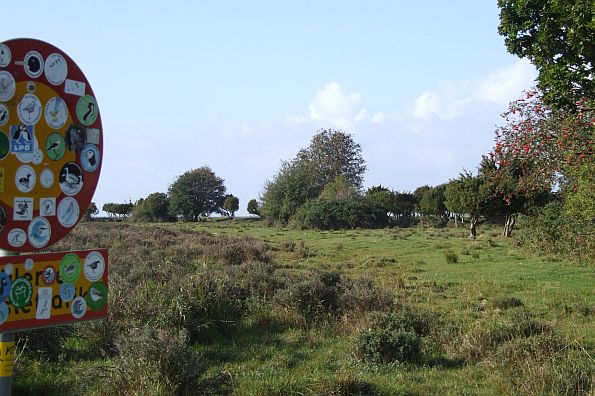 Ölands south tip. The southwest edge of the forest. A good place to look for passerines from the previous night. At this day (early October) it was full of Robins. |
|
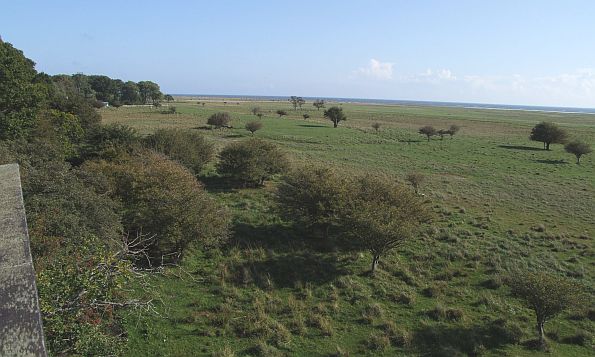 Ölands south tip. View across the Schäferi ängerna from the platform at the southeast side of the forest. Good for midday raptor migration along the forest edge. |
|
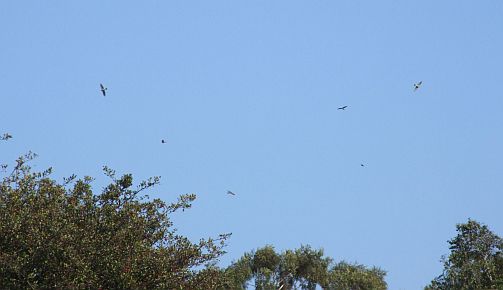 Ölands south tip. Sparrowhawks seen from the platform of the previous photo. |
|
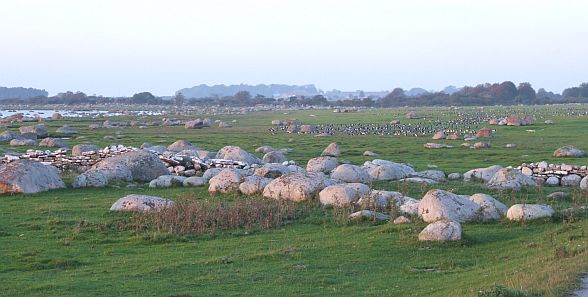 Ölands south tip. The strip of land west of the road to the lighthouse often holds geese (Barnacle and Brant). |
|
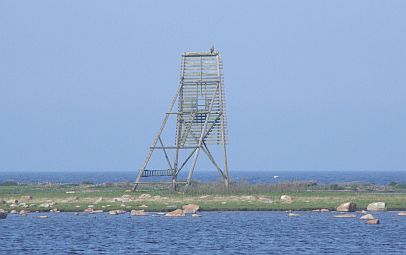 Ölands south tip. C. 1 km N of the lighthouse, always have a look at this structure, as it can have a White-tailed Eagle (like now). |
|
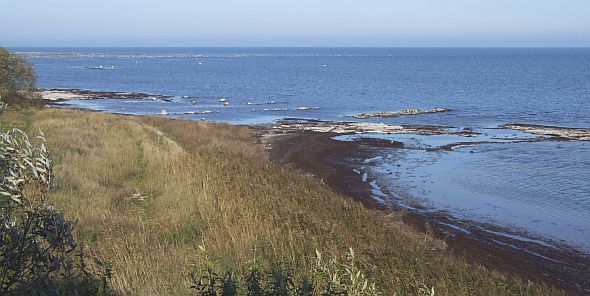 Öland, at Stenåsa (east coast). View from the platform at the NE tip of the campsite. Good for waders, and the campsite's trees and shrubs hold passerines on migration. |
|
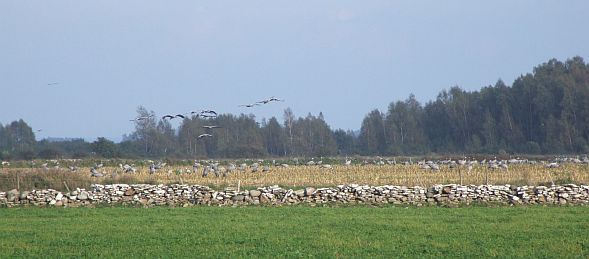 Öland, near Mörbylånga (west coast). Cranes are gathering here in the afternoon. Note the stone wall, typical for Öland. |
|
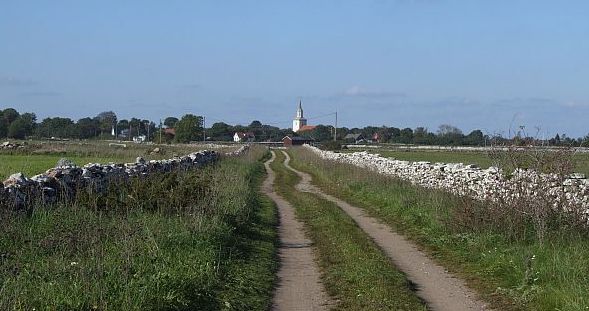 Öland, near Sandby (east coast). More stone walls here, with often wheatears on top. |
|
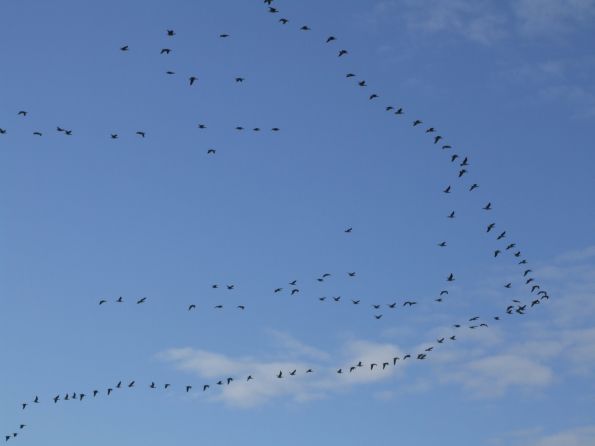 Öland. Geese (White-fronted) flying south. |
|
| After Öland we crossed southern
Sweden towards Göteborg, in order to take the ferry (3 hours, with
seabirds) from there to Frederikshavn in northern Denmark, and have
the uninterrupted motorway from Fredrikshavn all the way back to
Holland.
|
|
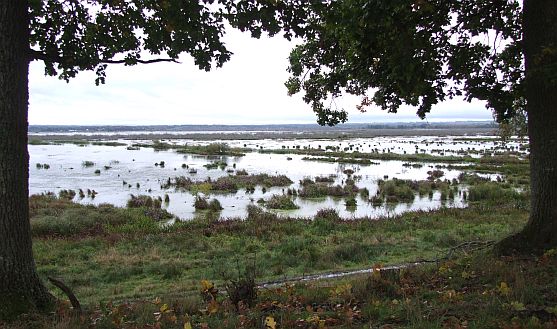 Hornborga lake (between the two big lakes Vänern and Vättern), seen from the west side. This area is more famous in spring of course (for the dancing Cranes) but still interesting (Golden Eagle, Merlin). |
|
 Map of Tiveden national park at the NW side of Vättern lake. From the car park (P) we walked the eastern loop trail (to Trollkyrka) and we saw several Capercaillie, all on the first half of the loop (when going anticlockwise). |
|
 Capercaillie on the information panel of Tiveden NP. |
|
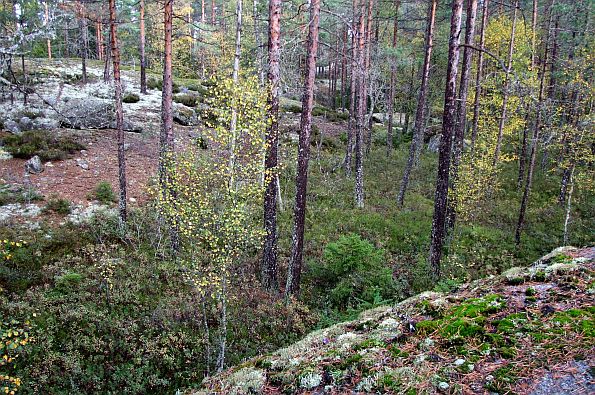 Tiveden NP. Capercaillie likes to feed in the lows between the rocky ridges. Approach these lows carefully, because Capercaillie is very shy and will nearly always fly off before you have had a proper look. |
|
 Tiveden NP. More Capercaillie habitat. |
|
 Tiveden NP. Good for mushrooms as well. |
|
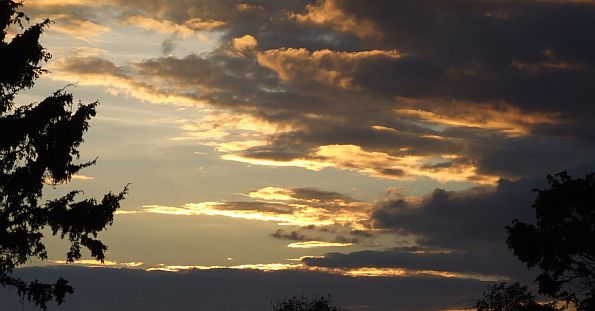 Swedish sunset. |
|